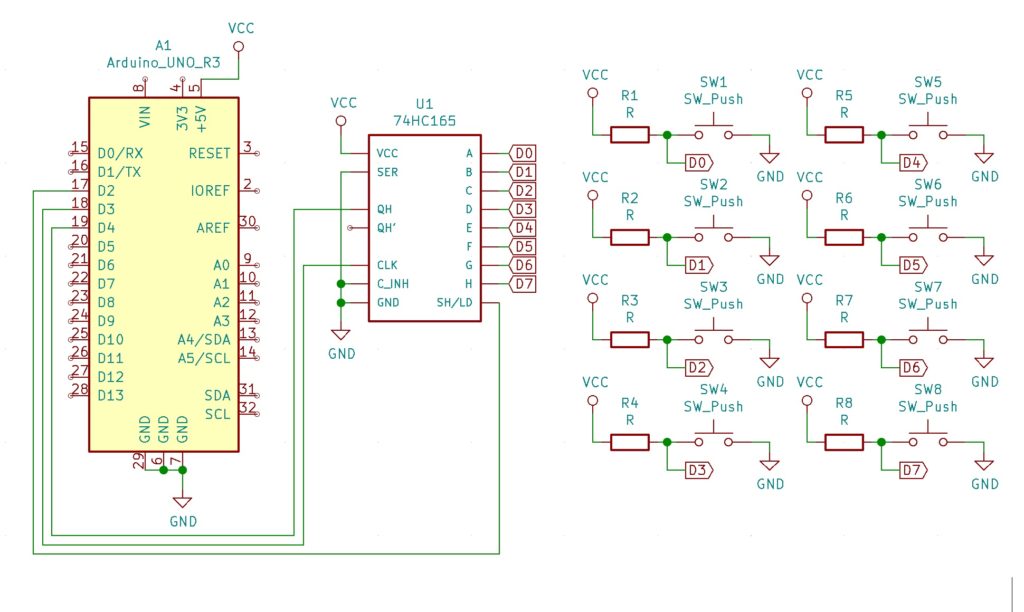
Posted in Microcontrollers Tagged 74hc165, input, rc, shift register Post navigation In between clock pulses, the microcontroller switches from output to input to read the data pin on each cycle. The data pin has an added resistor, which keeps the current low enough that it will not compete with the clock signal coming from the microcontroller. Notice that the clock and data pins are now connected to just one of the microcontroller pins. It’s the same as using SPI to drive 595 shift registers except the microcontroller reads data instead of writing it.īut wait, there’s more! The diagram above actually shows a way of reading this shift register with just one pin. You can still use hardware SPI to read the data using this method. This technique drops the control down to just two pins (data and clock). The addition of a carefully trimmed RC circuit (capacitor is charged by the clock pin, then the resistor lets that cap slowly discharge) means that the device will not latch until after the clock stops toggling. This hack first does away with the latch pin.

For those counting, that’s the three pins normally associated with driving these devices.

They have a parallel input register which can be read using the latch, then shifted into a microcontroller via the data and clock pins. 74HC165 shift registers are a popular choice for adding inputs to a microcontroller. Here’s an interesting article about reading data from shift registers using less than three pins.


 0 kommentar(er)
0 kommentar(er)
